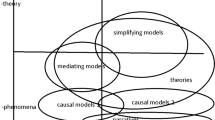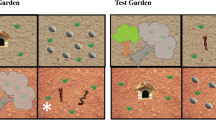Abstract
In this paper we provide a psychological account of the nature and development of explanation. We propose that an explanation is an account that provides a conceptual framework for a phenomenon that leads to a feeling of understanding in the reader/hearer. The explanatory conceptual framework goes beyond the original phenomenon, integrates diverse aspects of the world, and shows how the original phenomenon follows from the framework. We propose that explanations in everyday life are judged on the criteria of empirical accuracy, scope, consistency, simplicity, and plausibility. We conclude that explanations in science are evaluated by the same criteria, plus those of precision, formalisms, and fruitfulness. We discuss several types of explanation that are used in everyday life – causal/mechanical, functional, and intentional. We present evidence to show that young children produce explanations (often with different content from those of adults) that have the same essential form as those used by adults. We also provide evidence that children use the same evaluation criteria as adults, but may not apply those additional criteria for the evaluation of explanations that are used by scientists.
Similar content being viewed by others
References
Andersson, B. (1986), ‘The Experiential Gestalt of Causation: A Common Core to Pupils' Preconceptions in Science’, European Journal of Science Education 8, pp. 155–171.
Ben-Zvi, R., Evlon, B.-S., and Silberstein, J. (1986), ‘Is an Atom of Copper Malleable?’, Journal of Chemical Education 63, pp. 64–66.
Brewer, W.F., and Chinn, C.A. (1994), ‘The Theory-Ladenness of Data: An Experimental Demonstration’, in Proceedings of the Sixteenth Annual Conference of the Cognitive Science Society, Hillsdale, NJ: Erlbaum, pp. 61–65.
Brewer, W.F., and Lambert, B.L. (1993), ‘The Theory-Ladenness of Observation: Evidence from Cognitive Psychology’, in Proceedings of the Fifteenth Annual Conference of the Cognitive Science Society, Hillsdale, NJ: Erlbaum, pp. 254–259.
Brewer, W.F., and Samarapungavan, A. (1991), ‘Children's Theories vs. Scientific Theories: Differences in Reasoning or Differences in Knowledge?’, in R.R. Hoffman & D.S. Palermo (eds.), Cognition and the Symbolic Processes: Applied and Ecological Perspectives, HillsdaIe, NJ: Erlbaum, pp. 209–232.
Campbell, N.R. (1957), Foundations of Science, New York: Dover.
Carey, S. (1985), Conceptual Change in Childhood, Cambridge, MA: MIT Press.
Chinn, C.A. (1997), A Microgenetic Study of Learning about the Molecular Theory of Matter and Chemical Reactions, Unpublished Doctoral Dissertation, University of Illinois at Urbana-Champaign.
Chinn, C.A., and Brewer, W.F. (1992), ‘Psychological Responses to Anomalous Data’, in Proceedings of the Fourteenth Annual Conference of the Cognitive Science Society, Hillsdale, NJ: Erlbaum, pp. 165–170.
Chinn, C.A., and Brewer, W.F. (in press). ‘An Empirical Test of a Taxonomy of Responses to Anomalous Data,’ Journal of Research in Science Teaching.
diSessa, A.A. (1988), ‘Knowledge in Pieces’, in G. Forman & P.B. Pufall, (eds.), Constructivism in the Computer Age, Hillsdale, NJ: Erlbaum, pp. 49–70.
Driver, R., Guesne, E., and Tiberghien, A., (eds.), (1985), Children's Ideas in Science, Milton Keynes, UK: Open University Press.
Friedman, M. (1974), ‘Explanation and Scientific Understanding’, Journal of Philosophy 71, pp. 5–19.
Futuyma, D.J. (1983), Science on Trial: The Case for Evolution, New York: Pantheon Books.
Gauld, C. (1986), ‘Models, Meters and Memory’, Research in Science Education 16, pp. 49–54.
Giere, R.N. (1985), ‘Philosophy of Science Naturalized’, Philosophy of Science 52, pp. 331–356.
Gopnik, A. (1996), ‘The Scientist as Child’, Philosophy of Science 63, pp. 485–514.
Gould, S.J. (1977), Ontogeny and Phylogeny, Cambridge, MA: Harvard University Press.
Gunstone, R.F., and White, R.T. (1981), ‘Understanding of Gravity’, Science Education 65, pp. 291–299.
Kelemen, D.A. (1996), ‘The Nature and Development of the Teleological Stance’, (Doctoral Dissertation, University of Arizona, 1996), Dissertation Abstracts International 57, p. 2897B.
Kitcher, P. (1981), ‘Explanatory Unification’, Philosophy of Science 48, pp. 507–531.
Kornblith, H. (ed.), (1994), Naturalizing Epistemology 2nd ed., Cambridge, MA: MIT Press.
Kuhn, D. (1991), The Skills of Argument, Cambridge: Cambridge University Press.
Kuhn, T.S. (1977), ‘Objectivity, Value Judgment, and Theory Choice’, in T. S. Kuhn (ed.), The Essential Tension, Chicago: University of Chicago Press, pp. 320–339.
Laudan, L. (1977), Progress and its Problems, Berkeley: University of California Press.
Levin, I., Siegler, R. S., Druyan, S., and Gardosh, R. (1990), ‘Everyday and Curriculum-Based Physics Concepts: When Does Short-Term Training Bring Change Where Years of Schooling Have Failed to do so?’, British Journal of Developmental Psychology 8, pp. 269–279.
Miller, A.I. (1984), Imagery in Scientific Thought: Creating 20th-Century Physics, Boston: Birkhäuser.
Nagel, E. (1961), The Structure of Science, NY: Harcourt, Brace & World.
Piaget, J. (1960), The Child's Conception of Physical Causality, Totowa, NJ: Littlefield, Adams.
Reif, F., and Larkin, J.H. (1991), ‘Cognition in Scientific and Everyday Domains: Comparison and Learning Implications’, Journal of Research in Science Teaching 28, pp. 733–760.
Reiner, M., Chi, M.T.H., and Resnick, L. (1988), ‘Naive Materialistic Belief: An Underlying Epistemological Commitment’, Proceedings of the Tenth Annual Conference of the Cognitive Science Society, Hillsdale, NJ: Erlbaum, pp. 544–551.
Salmon, W.C. (1990), Four Decades of Scientific Explanation, Minneapolis: University of Minnesota Press.
Samarapungavan, A. (1992), ‘Children's Judgments in Theory Choice Tasks: Scientifc Rationality in Childhood’, Cognition 45, pp. 1–32.
Samarapungavan, A. (1995a March), Do Children Understand the Burden of Public Proof in Science, Paper Presented at the Meeting of the Society for Research in Child Development Indianapolis, IN.
Samarapungavan, A. (1995b April), ‘Establishing Boundaries for Explanatory Frameworks: Children's Epistemologies in Context’, in J. Astington (chair), Theory of Mind at School: Children's Scientific Reasoning, Symposium Conducted at the Meeting of the American Educational Research Association, San Francisco.
Samarapungavan, A., and Wiers, R. (1994), ‘Do Children have Epistemic Constructs about Explanatory Frameworks: Examples from Naive Ideas about the Origin of Species’, in Proceedings of the Sixteenth Annual Conference of the Cognitive Science Society, Hillsdale, NJ: Erlbaum, pp. 778–783.
Samarapungavan, A., and Wiers, R.W. (1997), ‘Children's Thoughts on the Origin of Species: A Study of Explanatory Coherence’, Cognitive Science 21, pp. 147–177.
Samarapungavan, A., Vosniadou, S., and Brewer, W.F. (1996), ‘Mental Models of the Earth, Sun, and Moon: Indian Children's Cosmologies’, Cognitive Development 11, pp. 491–521.
Schank, P., and Ranney, M. (1991), ‘Modeling an Experimental Study of Explanatory Coherence’, in Proceedings of the Thirteenth Annual Conference of the Cognitive Science Society, Hillsdale, NJ: Erlbaum, pp. 892–897.
Thagard, P. (1992), Conceptual Revolutions, Princeton, NJ: Princeton University Press.
Toulmin, S. (1961), Foresight and Understanding, New York: Harper & Row.
Vosniadou, S., and Brewer, W.F. (1992), ‘Mental Models of the Earth: A Study of Conceptual Change in Childhood’, Cognitive Psychology 24, pp. 535–585.
Vosniadou, S., and Brewer, W.F. (1994), ‘Mental Models of the Day/Night Cycle’, Cognitive Science 18, pp. 123–183.
Watson, J.B. (1919), Psychology from the Standpoint of a Behaviorist, Philadelphia: Lippincott.
Wellman, H.M. (1990), The Child's Theory of Mind, Cambridge, MA: MIT Press.
Woodward, J. (1989), ‘The Causal Mechanical Model of Explanation’, in P. Kitcher & W.C. Salmon, (eds.), Minnesota Studies in the Philosophy of Science: Vol. 8. Scientific Explanation, Minneapolis: University of Minnesota Press, pp. 357–383.
Author information
Authors and Affiliations
Rights and permissions
About this article
Cite this article
Brewer, W.F., Chinn, C.A. & Samarapungavan, A. Explanation in Scientists and Children. Minds and Machines 8, 119–136 (1998). https://doi.org/10.1023/A:1008242619231
Issue Date:
DOI: https://doi.org/10.1023/A:1008242619231




